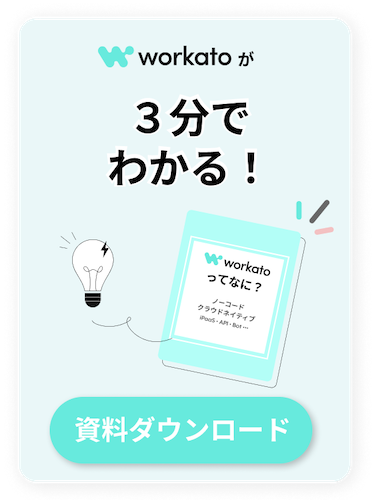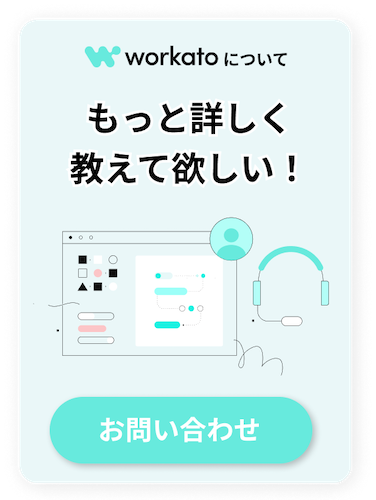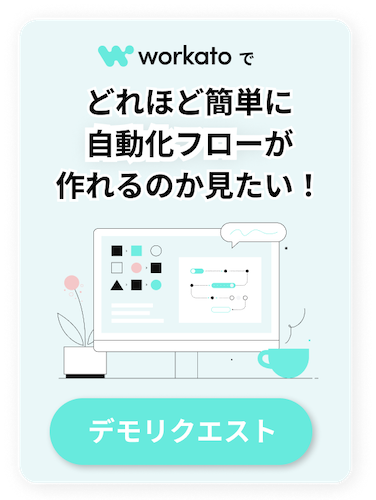2006年の創業以来、企業向けCRMプラットフォームの分野をリードしつづけてきたHubSpot社。急成長を遂げるなか、世界13カ所の拠点で積極的な採用活動を行い、ピーク時には毎月200人以上の新入社員を採用していました。その一方で、採用に伴うマニュアル作業が増加し、人事チームの負担になっていました。
採用のオンボーディング・プロセスには7チーム、計50人以上の社員が関わっており、ワークフローは15以上の異なるツールやシステムを使って管理されていました。新入社員1人を雇用するにあたって、各チームに発生するタスクの数は20〜30件。マニュアル対応しなければならないメールの送信なども含めると、全体で毎月約4,000~6,000件のタスクをこなさなければならない状況でした。
また、連絡事項や統合エラー、チームごとのタスクの進捗を一元して管理する場所がないことも大きな課題でした。チーム間の連携状況を把握できず、ときには各プロセスの直接的な責任者がはっきりしないまま、統合エラーで最大1週間の遅延が発生することもあったのです。
さらに、これまで採用活動に用いていたプラットフォームが、HubSpot社が必要とする重要な機能をサポートしていなかったことも問題を大きくしました。具体的には、多数のコネクタ、セキュリティ、アクセス管理、バージョン管理、優れたUI/UXなどです。同時に、非テックチームを含む組織全体のインテグレーションビルダを有効にしたり、サポートしたりすることにも苦労していました。
オンボーディングの作業負荷を、より効率的かつ汎用性の高い方法で、各チームに分散させるためにはどうすればいいのか――。同社テクノロジー・ストラテジストであるJasper Madrone(ジャスパー・マドローン)氏は、こうしたツールを一カ所に集約し、組織全体のコラボレーションを向上させる必要があると考えました。

Want to learn more?
Madrone walks us through his automations during his recorded session from Automate.
入社前から入社後までのプロセスを追跡・管理する、エンタープライズコラボレーション・プラットフォーム
上記の課題を解決するため、HubSpot社の ITチームはWorkatoを活用し、Greenhouseや Workdayなど複数のアプリケーションにまたがるデータを抽出。入手したデータを、エンタープライズコラボレーション・プラットフォームと同期させました。その結果、人事チームは採用前から入社までの候補者のオンボーディングプロセスを、同プラットフォームのダッシュボードで一括して追跡・管理できるようになっています。
ジャスパー氏は、次のように語ります。「記録にそれぞれ動きのあるタグを付けることで、特に注意すべき重要なシナリオが目立つようにしました。また、各担当者のオンボーディングタスクのステータスをダッシュボードに表示することで、プロセスで行き詰まっている人がいないか、どのチームがフォローアップを担当するかをすぐに確認できるようにしています。それぞれの記録に更新ログが付くので、必要なときにチームが協力したり、コミュニケーションを取ったりすることが可能になりました」
また、タスク自体もダッシュボードに保存され、各チームがニーズに合わせてカスタマイズしたビューを作成できます。さらに、新入社員のタスクの全体像を把握することも可能となっています。
オンボーディングプロセス全体を構成する、その他のワークフローも自動化
1. 採用自動化の流れ
HubSpot社のITチームは、Workatoを利用して、Docusign、Workday、SlackをHubSpotのエンタープライズコラボレーション・プラットフォームと連携させました。候補者がDocusignで採用オファーに署名すると、WorkatoはバックエンドでGreenhouseに接続。Greenhouse上で、自動的にその候補者に「採用」のマークを付けます。
Greenhouseで「採用」のステータスが検出されると、WorkatoはGreenhouseとWorkdayを統合し、オファーレターをその候補者のプロフィールに直接アップロードします。
Workdayへのアップロードに失敗すると、Workatoはバックエンドで問題の概要や必要なリソース、関連レコードへのリンク、対応する社員などの情報を人事部または採用担当者にSlackで通知し、解決へと導きます。さらに、この情報をHubSpotのエンタープライズコラボレーション・プラットフォームと同期することで、統合エラーをすぐに視認できる仕組みを整えています。
現在のプロセス:
2. ビザの審査プロセス
ビザのスポンサーシップが必要な候補者については、採用担当者がビザ評価フォームをHubSpot社のグローバルモビリティチームに提出する必要があります。
Workatoを導入する前は、15項目以上のフォームに入力しなければなりませんでした。
現在、そのプロセスは合理化され、次の2つのパートに分けられています:
a. 就労許可フォーム
GreenhouseとWorkbot for SlackをWorkatoで連携させることにより、候補者がGreenhouse内の特定のステップ(例えば「マネージャーによる電話インタビュー」など)に進むと、採用担当者に就労許可フォームを記入するよう自動的に通知が届くようにしました。このフォームには、候補者にビザ審査が必要かどうかを判断するためのデータポイントが記載されています。
b. ビザ評価フォーム
候補者がビザを必要とする場合、採用担当者はビザ評価フォームを記入するよう通知されます。HubSpot社のITチームが、候補者の名前や職務内容など繰り返し出てくるデータを自動で紐づけられる設定にしているため、採用担当者の手間が省けます。また、採用担当者はHubSpotのエンタープライズコラボレーション・プラットフォーム上のダッシュボードで、フォームの送信状況を追跡できます。
現在のプロセス:
3. 新入社員へのノートパソコン配布
HubSpot社のITチームは、HubSpotのAPIを活用するために、Workatoのカスタムコネクタを構築しました。新入社員を受け入れるためのシステムとWorkatoを統合させることで、事前準備の完了した候補者がピックアップされます。その後、候補者にノートパソコンの希望発送先を聞くための自動メールが、Hubspotを介して送信されます。
自動メールを受け取った候補者が必要な情報を送信すると、Workatoはエンタープライズコラボレーション・プラットフォーム内にあるヘルプデスクチームのダッシュボードにその情報を同期します。そして、新入社員のグループ(例えば「21年入社組」など)ごとに候補者を自動的にソートしていきます。ヘルプデスクチームは、そこからボタンをクリックするだけで、発送済みノートパソコンの追跡情報が記載されたメールを新入社員に送信できます。
現在のプロセス:
4. 新入社員データのバリデーション
Workbot for Slackを使い、Workatoは各採用担当者に新入社員の詳細を記載したメッセージを送信します。採用担当者は、その内容が正確かどうか、ボタンをクリックして確認。これが完了するまで、毎日、自動でリマインダーが送信されるよう設定されています。
また、採用担当者はヘルプリクエストも送信できます。このリクエストは関係者の共有チャンネルに転送されるため、問題の迅速な解決につながります。
現在のプロセスの様子:
5. Workatoを活用したタスク割り当て管理
HubSpot社のITチームは、Workatoを活用し、セルフサービスのヘルプデスク用アサインルールのダッシュボードを作成しました。このダッシュボードでは、地域ごと、オフィスごと、チームメンバーごとのタスクに関するデータを、バックエンドでHubSpotのエンタープライズコラボレーション・プラットフォームに紐付けます。
新しいタスクが作成されると、人事チームはダッシュボードから設定を参照し、どのメンバーにタスクを割り当てるかを決定します。
現在のプロセス:
Workatoの導入後、HubSpot社には次のようなビジネスインパクトと投資対効果が見られました。
- 社内システムのユーザビリティスコアが62ポイントから86ポイントに上昇。
- 採用メールの送信にかかる時間を月68時間削減。
- 採用メールの送信数が24通から8通に減少。コミュニケーションがより効率的に。
- タスク管理に必要な時間を71時間短縮。導入後3カ月で、855件の応募に「採用」マークが自動で付くように。
- 統合エラーの解決にかかる時間を、平均3日から約2時間に短縮。
- ヘルプデスクに代わり、1,700件のタスクを自動で完了。
現在では、新入社員のデータ属性が変更されると、自動的にSnowflakeに情報が同期されるようになっています。
一元化されたエンタープライズコラボレーション・プラットフォームでHubSpot社の採用にまつわる課題を解消し、スムーズなオンボーディングを可能にしたWorkatoのソリューション。各月の雇用数や通知数、チームのタスク内容およびステータス、自動化で終了したタスクの割合といった重要なデータを見やすく表示することで、さらなる業務の効率化をサポートしています。
Workatoで何ができる? 自動化(オートメーション)の専門家によるデモをぜひご依頼ください。簡単な質問でもお気軽にお問合せください!



